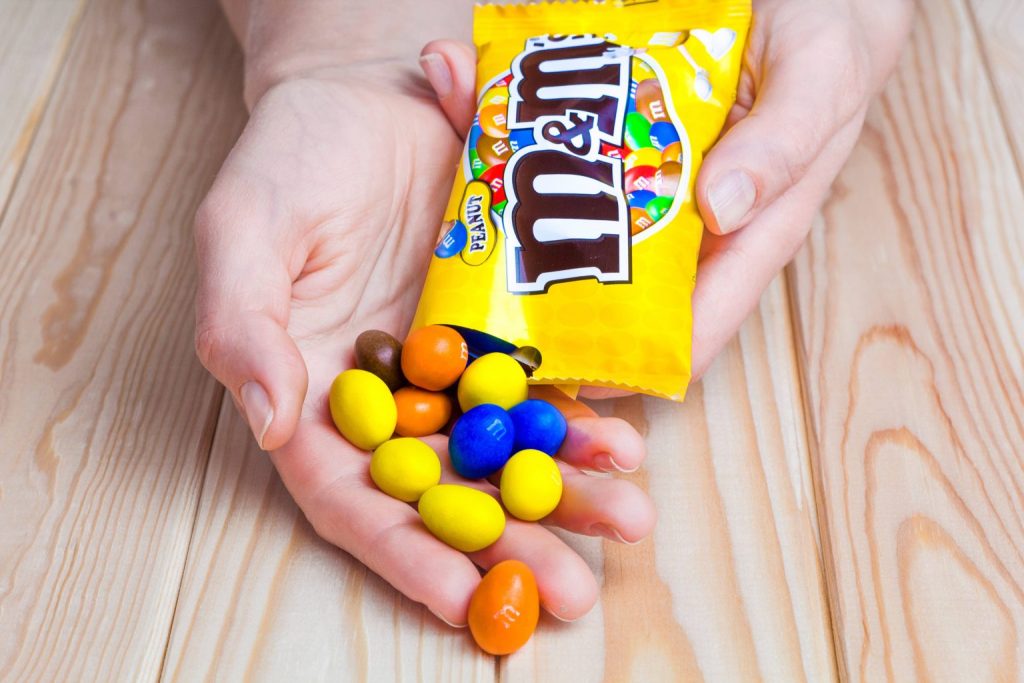Rarest M&M Color

M&M’s is one of the world’s most famous chocolate brands. Its name originally stood for “Mars & Murrie”, as the candy started out as a collaboration between the Mars and Murrie companies. The two companies created the chocolate due to a demand for small-sized treats for soldiers fighting in World War II. Eventually, Mars took full control of the brand and it is now one of the company’s flagship products.
M&M’s come in a wide variety of colors. As of 2022, these colors are red, brown, orange, yellow, green, and blue. They also come in various variants: in addition to plain chocolate candies, versions that include peanuts, caramel, other nuts, and other ingredients are also available.
Perhaps at some point, you may have wondered about the proportion of colors found in a pack of M&M’s. Maybe you’ve wanted to find out what is the rarest M&M color. The answer to this question and more will be explained in this article, and the answers may surprise you!
Rick Wilkin’s Quest to Find the Rarest M&M’s Color
Statistician Rick Wilkin, who worked for the SAS Institute (a big M&M’s client), decided to do his statistical study after noticing that the Mars’s website, which previously listed various proportions, no longer did so. He also wanted to test if the proportions that used to be listed on the website were accurate or not. He noted that Mars produces M&M’s at two factories in the United States: one in Cleveland and one in New Jersey.
After inquiring with the company, he was able to get two separate proportions of data from both factories. He learned that the two factories did not have the same proportions. Following this, he decided to do his experiment.
The Rarest M&M’s Color? It’s Brown
In the end, he discovered that these findings did not match what was originally listed on Mars’s website. In his samples, he found out that only around 13.48% of all M&M’s are brown. The next rarest color was yellow, with a proportion of only 14.47%. By contrast, green was the most common color, with a proportion of 19.52%.
While Mars’s website listed blue as the most common color (24%), Wilkin instead found that green was more common. However, the website did mention that the three rarest colors were yellow, red, and brown respectively, and this matched Wilkin’s findings. He also noted that his findings that brown being the rarest color also matched the data he received regarding the two factories. However, the factories’ data claimed that orange was the most common color, which did not match his findings.
Incidentally, Wilkin noted that the proportion may have changed over the years. For example, around 1997, Mars’s website listed brown as the most common color and blue as the least common. He also notes that his findings only refer to plain M&M; he admits that proportions for other varieties such as peanuts may be different, although he did not include other variants in his study.
M&M’s Colors Have Changed Over The Years
As mentioned earlier, while Wilkin found that brown was the least common M&M’s color, this may have not always been the case. Indeed, M&M’s didn’t always have the current combination of red, orange, yellow, green, blue, and brown.
When M&M’s was first launched in 1941, the original colors were red, brown, yellow, green, and purple. Purple M&M’s proved to be short-lived as they were replaced with tan by the end of the decade.
During the 1970’s, a food scare occurred due to fears that red dyes were carcinogenic. Specifically, studies on rats showed that a dye called “Red Dye #2” could cause cancer. Mars did not use this specific dye to color their M&M’s red. In addition, the FDA raised concerns about the reliability of the study. However, the scare was strong enough that the company decided to replace red with orange.
The decision proved to be unpopular among M&M’s fans. In the 1980s, Paul Hetmon, a University of Tennessee student, launched a joke group called the Society for the Restoration and Preservation of Red M&Ms, complete with paid membership dues and letters. The group gained so much traction that Mars eventually decided to bring back red M&M’s. To this day, red continues to co-exist with its original replacement orange.
While red M&M’s had a cult following, the same could not be said for tan M&M’s. In fact, tan M&M’s were so unpopular that in 1995, Mars held a public vote on a color to choose one that would replace tan. Ultimately, blue won out over purple and pink.
Other Colors of M&M’s Also Exist
While red, orange, yellow, green, blue, and brown are the current standard colors of M&M’s packages, other colors also exist. Some of these colors were limited-edition items used in promotions.
